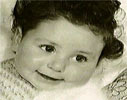How are museums represented online and how do they represent themselves? I am interested in the electronic museum, and, specifically what is it that makes a museum a museum even after they have breached the walls of the physical institution.
When museums define their virtual presence via their website, or extend their activities across social networks, do they draw on their traditions – already firmly established and instantly recognised from the physical museum - to extend and augment their activities online? I intend to trace the different ways that museums cross over from the physical to the mediated, and in doing so will explore the ways in which they bring their 'museum-ness' to their online surrogates.
Clearly traditional museum audiences travel the net much in the same way that the typical user has been identified travelling the net; spending much of their time in social networks such as Twitter, Facebook and Myspace, seeking their entertainment over such platforms as YouTube, Flickr, and sending in their avatar to represent, and interact on their behalf in persistent worlds, such as Second Life. Museum content that is limited to the institutional website suggests that – as excellent as this content is – it could sit in deep silos - with users bypassing museum resources as they seek similar content (although far less rich, or structured) already at their fingertips.
So the museum has begun to colonise web 2.0 spaces and here too it is fascinating to see how they have made their screen debuts. There are already many excellent examples of museums taking the lead in social network platforms, and opening their web spaces up to user-generated content, yet, having said this, there is also resistance from the managers of memory institutions who are not too eager to shift the balance between those reading the museum, and those who might wish to actually write the museum; in a truly Web 2.0, read/write scenario.
The discussions here therefore unite both the physical and the electronic components of the museum into a cohesive and fully integrated space that I have called the Musesphere. The term Musesphere was coined to describe the tangible and intangible texts made available to both local and remote visitors through new media, and harnessed to describe both the physical and digital footprints of the museum.
This blog seeks to identify those meeting places; where social networks of museum professionals and museum users can come to read and write together, and, in the weeks 'visit' museum activities and contents in order to provoke the question 'when is a museum not a museum'. Hopefully these short conversations will instigate hopefully some useful discussions in the true museum tradition and in doing so, will identify the successes and failures whereby museums extend their museum-ness into virtual spaces.
Dr. Susan Hazan
Jerusalem
Subscribe to:
Post Comments (Atom)

No comments:
Post a Comment